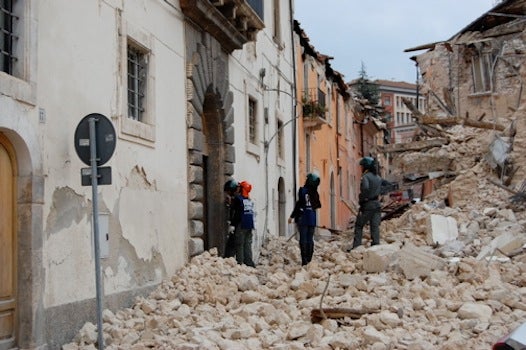Flour Experiment Helps Explain Strange Lights Preceding Earthquakes
There are now several theories to explain the existence of pre-earthquake lights.


L’Aquila quake damage
Scientists have recently shown that strange lights, such as those described as “glowing orbs,” have indeed appeared before major earthquakes, for example in Japan and L’Aquila, Italy. But how?
U.S. scientists propose a new theory: Shifting soil layers could create huge electrostatic charges that travel to the surface, giving off light.
“We took a tupperware container filled with flour, tipped it back and forth until cracks appeared, and it produced 200 volts of charge,” said Rutgers University researcher Troy Shinbrot. “There isn’t a mechanism I know that can explain this. It seems to be new physics.” They repeated the experiment with other granular materials (like those in soil) and got the same results. Shinbrot explained in an email that although it did produce high voltages, there was “no current to speak of, so there’s no power to be obtained.”
The data showing the production of charges has been shown by labs at Rutgers, N.C. State and Penn State, Shinbrot told Popular Science. But whether or not it produces earthquake lights is as yet unclear. The team, including researchers from the three schools, presented their findings at the American Physical Society meeting in Denver.
There are several other theories about what creates these lights. In 2003, researcher Friedemann Freund proposed that the lights were produced by electrical fields unleashed by the crushing and twisting of rocks. Another theory proposed in 1982 suggests the lights could be created by frictional heating at faults. A recent paper in Seismological Research Letters found that 63 out of the 65 times that earthquake lights were reported in the past couple centuries, vertical faults caused the quakes. This could help explain all of the theories, depending on how one interprets them, but does suggest that this alignment fosters pre-earthquake lights, which could potentially be used some day as an early warning system.